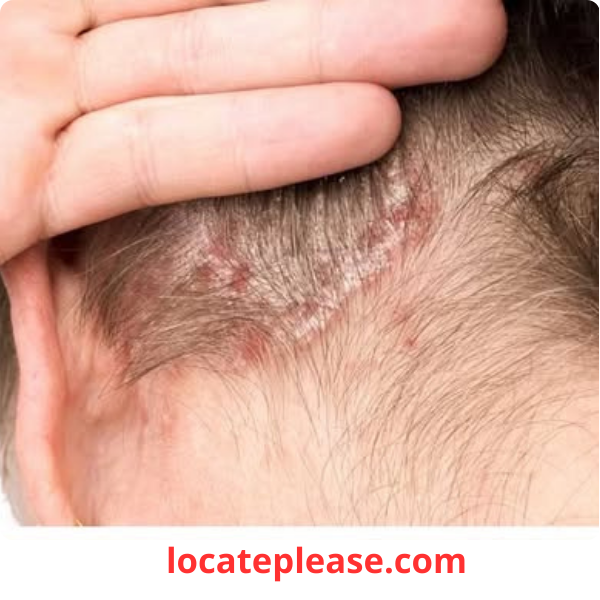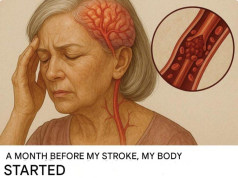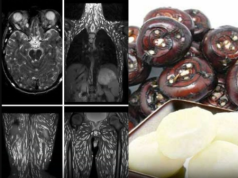As a parent, few things are more unsettling than discovering an unusual bump, patch, or lesion on your child’s scalp — especially when you can’t get a doctor’s appointment for days or even weeks.
You’re left wondering:
👉 Is it serious?
👉 Could it be contagious?
👉 Should I be worried?
You’re not alone.
Many parents face this exact situation — and while only a healthcare professional can give a definitive diagnosis, understanding the most common causes can help you manage the issue safely and confidently in the meantime.
In this guide, we’ll walk you through:
- The most likely causes of scalp bumps in children
- How to tell the difference between common conditions
- Safe, at-home care strategies
- When to seek urgent medical attention
Let’s get to the bottom of what might be going on — and how to keep your child comfortable and safe.
🔍 Common Causes of Scalp Bumps in Children
Not all scalp issues are cause for alarm. Here are the most common conditions that can cause bumps, flakes, or irritated patches:
1. Seborrheic Dermatitis (Cradle Cap)
- What it looks like: Greasy, yellowish scales or crusty patches
- Common in: Infants and young children
- Symptoms: Mild redness, flaking, sometimes itching
- Cause: Overproduction of oil and a harmless yeast (Malassezia)
✅ Not dangerous — often clears on its own or with gentle care.
2. Folliculitis
- What it looks like: Small red bumps or pus-filled pimples around hair follicles
- Symptoms: Tender, itchy, sometimes painful
- Cause: Bacterial (often Staph) or fungal infection of hair follicles
- Triggers: Sweat, tight hats, poor hygiene, or minor cuts
✅ Mild cases heal with proper cleaning; severe cases may need antibiotics.
3. Pilar (Trichilemmal) Cysts
- What it looks like: Smooth, round, firm lump under the skin
- Size: Pea-sized to larger
Symptoms: Usually painless unless infected
- Cause: Blocked hair follicle — completely benign
✅ Common on the scalp and harmless unless it grows or becomes tender.
4. Psoriasis Vulgaris (Scalp Psoriasis)
- What it looks like: Thick, red patches covered with silvery-white scales
- Symptoms: Itching, burning, flaking, sometimes temporary hair loss from scratching
- Cause: Autoimmune condition causing rapid skin cell turnover
- Key sign: Well-defined, raised plaques that may extend beyond the hairline
⚠️ Chronic but manageable — often mistaken for severe dandruff.
5. Ringworm (Tinea Capitis)
- What it looks like: Round, scaly patch with hair loss in the center
- Symptoms: Itching, redness, sometimes swollen lymph nodes
- Cause: Fungal infection — highly contagious
- Note: Despite the name, it’s not a worm — it’s a fungus
🚨 Requires antifungal treatment — does not go away on its own.
6. Insect Bites or Lice
- Bites: Red, itchy bumps — often in clusters
- Lice: Tiny red bumps, intense itching, visible nits (eggs) on hair shafts
- Check: Behind ears, nape of neck, crown
✅ Treat with lice shampoo or antiseptic wash if needed.
🧴 What You Can Do at Home (While You Wait)
Until you can see a doctor, here’s how to soothe, monitor, and prevent worsening:
✅ 1. Gentle Cleansing
- Wash the scalp with a mild, fragrance-free shampoo
- Avoid harsh scrubbing — use fingertips, not nails
✅ 2. Moisturize (If Dry or Flaky)
- Apply coconut oil, aloe vera gel, or baby oil to soften scales
- Leave on for 30–60 minutes, then gently brush and shampoo
💡 Great for cradle cap or psoriasis — helps loosen flakes.
✅ 3. Apple Cider Vinegar Rinse (For Itch & Flakes)
- Mix 1 part ACV with 2 parts water
- Spray or dab on affected areas
- Leave for 10 minutes, then rinse
- Helps balance pH and reduce yeast/fungal growth
⚠️ Avoid if skin is broken or raw — can sting.
✅ 4. OTC Treatments to Consider
- Salicylic acid shampoo (e.g., Neutrogena T/Sal) — loosens scales
- Coal tar shampoo (e.g., Psoriasin, T-Gel) — reduces inflammation and flaking
- Hydrocortisone cream (1%) — for redness and itching (use sparingly on scalp)
🛒 Available at most pharmacies — ask the pharmacist for guidance.
✅ 5. Keep It Clean & Trimmed
- Keep hair short if the area is irritated
- Avoid hats or headbands that trap sweat
- Wash combs and brushes regularly
📸 How to Document for the Doctor
When you finally get that appointment, help the doctor by being prepared.
Take clear photos of the area:
- Close-up and wide-angle
- In natural light
- Every few days to track changes
Note:
- When it appeared
- Any symptoms (itching, pain, fever)
- Recent illnesses, hair products, or insect exposure
- Whether it’s spreading or changing
This info can help speed up diagnosis.
🚨 When to Seek Medical Attention Immediately
While many scalp issues are mild, some signs mean you should act fast — even if you can’t get a regular appointment:
Seek care if your child has:
- Fever or swollen glands
- Pus, oozing, or increasing redness (signs of infection)
- Rapid spreading of the rash or bump
- Hair loss in patches
- Extreme pain or discomfort
- No improvement after 7–10 days of home care
In urgent cases, visit an urgent care clinic or dermatologist — or consult a telehealth provider who can evaluate photos and recommend next steps.
🌐 Helpful Resources & Support
You’re not alone. These trusted resources can help:
- American Academy of Dermatology (aad.org) – Skin condition guides and find-a-derm tool
- National Psoriasis Foundation (psoriasis.org) – Info on scalp psoriasis and treatments
- Telehealth services – Many offer same-day virtual visits with doctors
💡 Final Thoughts: Stay Calm, Stay Observant, Stay Safe
Finding a strange spot on your child’s scalp is scary — but panic won’t help.
Most scalp conditions are treatable, non-dangerous, and common in kids.
By learning the differences between cradle cap, psoriasis, ringworm, and cysts, you can take smart, safe steps at home — while waiting for professional care.
So breathe.
Document.
Soothe.
And trust that with time and the right care, most issues resolve.
Because being a parent means being both calm and courageous — even when you’re worried.
Your child is in good hands — especially yours.










